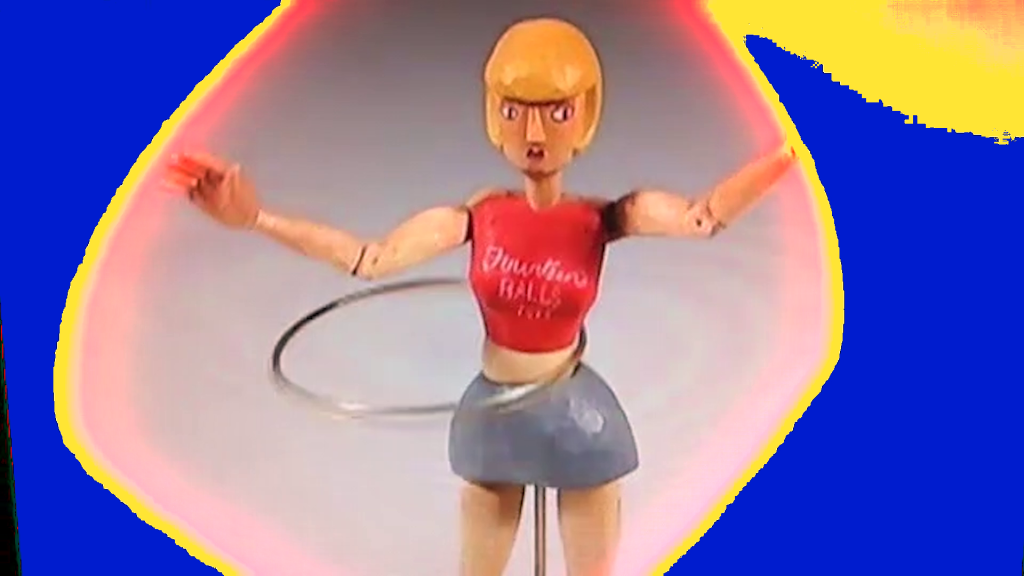
Jamie Wyld: Thanks for being part of the Vital Capacities residency programme! Can you say a little about yourself and your work, perhaps in relation to what you’re thinking about doing during the residency?
violet marchenkova: So I am a moving image artist, writer, and community organiser. I make short experimental first person films, some people say they are like visual poems of sorts. I haven’t been able to make a film since 2019, when I had a residency at ONCA Barge, so I’m really excited to reconnect with that part of me and see where and how my practice can develop.
My roots are in being an art historian and documentary practitioner – so I’m hyperaware of the money and power that make artworks in history what they are, and I’m very critical of how realism is signalled and how the truth is constructed. That’s just what goes on in my head most of the time.
I’m currently thinking about the theme “Environment” in terms of accessibility frameworks, experiences of isolation, domestic spaces used for feminist organising (and how we lost that during lockdowns), UK’s hostile environment policy, the designed environment of the house that I’m currently in but being evicted from.
Otherwise, I’m looking at some Wolfgang Tillmans’ artist books I got gifted, I’m reading “No Bad Parts” about internal family systems, I’ve just received my copy of Ф Письмо by isolarii with Russian feminist poetry (that I’m too scared to read because it’s too close to my heart), and I’m watching Queer Eye to sleep because apparently, I’m not okay unless a see a group hug every 5-10 minutes. That is what’s in my field of awareness at the moment.
JW: One of the aims of Vital Capacities is to create an accessible site (so more people can use it) – how do you think this will be an opportunity to develop your way of working?
vm: I love that website. It strikes me as this luscious garden patch, where all kinds of pieces – from voice notes and unfinished thoughts to complete videos – can sit together, cross-pollinate.
I never had a real artist studio! And my whole adult life I’ve been stuck between art institutions and DIY art scenes – between the institutionally validated ways of working and rebellious acts – which is not the worst place to be but it brought a lot of inconsistencies to my life that I used to not know how to hold.
For my creative practice to flourish, and even to simply exist, I’ve always felt like I needed to first organise spaces and structures where art like mine could be appreciated. I think that is what drove me to put so much energy into community organising with Devil’s Dyke Network. Art needs to be shared and when you can’t see any contexts or venues or projects that your work could unapologetically fit in (or those are too out of reach) – you start questioning yourself.
So yeah, seeing this virtual space already set up for me, that is so versatile and served so many different artists before me – I feel held! and ready to express and document ideas.
JW: What would you like to achieve through the residency? Is there a particular project you’ll be focusing on?
vm: Honestly, I just intend to be the most neuroqueer artist version of myself that I can be and stop apologising for it, for being different, for any of that.
In previous residencies, or while at uni, I’ve always struggled with my failing to “do things properly” or was insecure about my film practice, unaware how neuroqueerness draws me to new and unexpected paths that are equally as valid. There’s too much professionalisation of the artist that’s gone down in the past decades, and I don’t think I can perform that to any good outcome. And I think I’m at peace with that.
The thing is that many disabled artists are perpetually emerging, we are constantly stuck in being emerging artists because the consistency and progression that we expect in an artist’s career are jeopardised by barriers to access and the shortage of opportunities. Disability often directly relates to our capacity for labour so things like long periods of inability to work, and maybe just general ableism of the art world are major exclusionary forces. So, honestly, I’m just here to take this paid time, focus on my art and see what needs to be said.
JW: How do you see the next few weeks unfolding? Where would you like it to take you?
vm: My art practice never works out in a planned-out cause-and-effect way. I just love listening to Alexis Pauline Gumbs talk about receptivity and being a vessel, our practice being a portal. Whatever comes through us is a gift. No ego, no control, just receiving.
Usually, I just kind of sketch out ideas, listen to what asks to be made visible. Filmmaking is a space for me where I can speak in a language that is true to me, as opposed to the life of writing narratives on other people’s terms (disability assessments, funding applications, social media, stuff I write in my day job).
I’m looking forward to just sitting down to look at the footage I have accumulated (some important pieces from visiting Latvia and Scotland), playing around with editing, writing a bit more, maybe a new script.